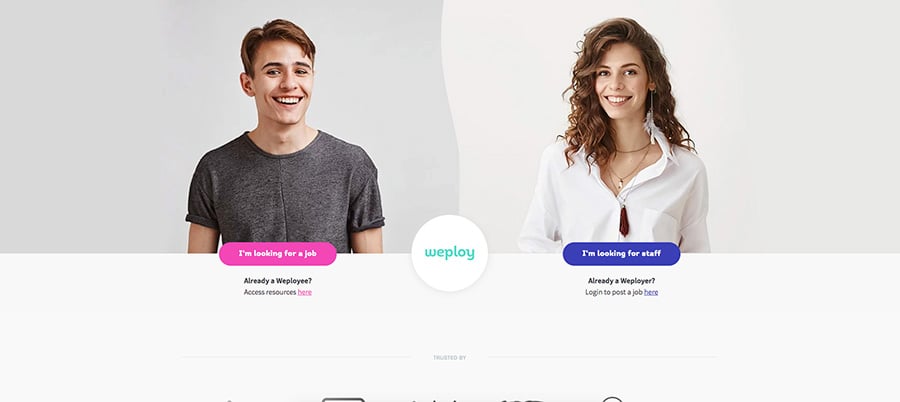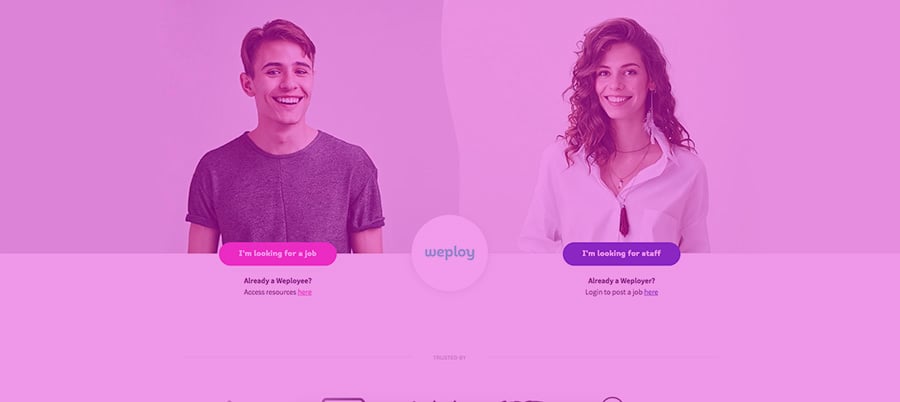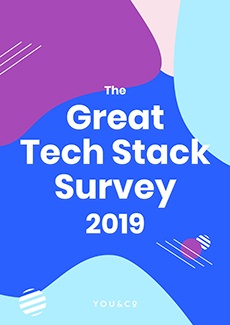Lower CAC, higher ROI, and team high-fives are often a product of considered segmentation. You may already be implementing some form of segmentation, but are you leveraging it to its full potential?
We've seen SaaS businesses and teams hone in on messaging by re-tuning their site pages, tightening up journeys and ultimately boosting results with a clearer and more strategic approach to segmentation. It’s easy to get lost in overwhelm with the sheer magnitude of data at your fingertips working in SaaS, and consolidating and enriching customer insights through segmentation theory can help to tackle the ‘why’ behind some of the trickiest problems.
The benefits of segmentation
As marketers, we’ve seen how segmentation validates the identity of customer groups, while personas and job stories help to then enrich the identities for other marketing efforts. Considered segmentation leads to increased focused messaging, the ability to build trust more effectively, improvements in response and conversation rates, and can also influence hyper-personalisation. Many underestimate the sheer power that effective segmentation can hold for most areas of your business, from helping identify what marketing efforts are reaping value to influencing product updates, however, this is only powerful if you do the thinking and then build your groups. For SaaS folk looking to up your acquisition efforts, let’s run through what you need to know before you go segmenting for the sake of it.
How to define your segments?
The construction of a considered go-to-market or funnel will thrive on proper planning around your audience or marketplace. How would you slice or section your market to increase acquisition, boost velocity and aide efficiencies towards economics like CAC? Well, the usual segmentation suspects (demographic, geographic, psychographic & behavioural) all still apply and are of optimal value, but the sheer depth of information you collect from your customers (consensually of course) within the SaaS industry is too juicy not to sink your teeth into!
We found that for one of our SaaS customers, segmenting by region & industry were effective in determining the direction of customer conversations. The types of industries engaging with the product vary vastly, so segmenting off industry type exposed common pain points across their customer base whereas segmenting by region offered insight into the varying currency and time zone differences that they would have to factor into their marketing communications when tailoring to specific groups.
Before diving into the depths of how far you can go with segmentation, you need to ensure the segment is going to be effective and add value to your efforts. Tomasz Tunguz is a huge advocate that segments should be measurable, addressable, stable and consistent in order to reach optimal effectiveness and we agree!
Let’s break these down a little:
Measurable 📊
Pick a metric, any metric - provided you have enough data. For instance, the total number of sales resulted from a persona group, taking into account historical data.
Addressable 🤩
Ensure you can have a real impact on the segment of customers you’re identifying. This comes hand in hand with speaking to a defined persona group and having consideration for their journey.
Stable 🗿
Stability is key to ensuring reliable insights from your chosen segment - so best to factor in external pressures for minimal fluctuation.
Consistent 🌞
Worth thinking the extra 10% here and not rushing through your segmentation so you aren’t wasting time down the track or trying to pivot frequently. For one of our customers, we’ve based segmentation off the persona who is the ultimate decision maker so we’re speaking directly to their pain points.
When executed properly, segmentation should be in place, managed, updated, tweaked, tuned and performance based on experimental steps moving forward. You’ll soon reap the benefits of improved relevancy in your comms and reduce your CAC while you’re at it. While segmentation within SaaS marketing can elevate your efforts noticeably, it can be time intensive to set up costing marketers precious time that they’re already lacking.
Pro tip: Segmentation isn’t suitable if you don’t have the data at hand to add tangible value and insight into the segment you’re creating.
How far should you go with segmentation?
If you find you do have rock solid data to draw on to help quantify your segment, go for gold! For your SaaS platform, segmentation that works for you could be in the shape of any one thing - perhaps “customers acquired through LinkedIn that have an active trial”, or maybe more of a needs or profitability-based segment. Segmentation also leads to more focused messaging by acknowledging not all customers want the same thing, which results in a reduction of cost by only targeting certain segments with specific messaging.
At the end of the day, the right message delivered to a considered audience will see more engagement and improved response and conversion rates.
At You & Co, we think of segmentation as a guided story, something that you are learning from and adapting to assist in delivering the best outcomes on both sides.
Being able to quantify where your customers are coming from (i.e. social, channel, content) can help to identify and influence your acquisition strategies based on the kinds of customers you’re wanting to attract. From there you are able to learn more from the customer and develop an accurate persona, which is where customer segmentation and persona building come hand in hand. Personas determine product design and development, marketing and sales, and even customer success. Customer segmentation helps to validate and find the perfect market fit for your persona, it provides answers to what is/isn’t working, which customers are the ‘best’ and where did they come from?
There are several strategies you can adapt to begin meticulously planning your segments, but here are three that we think are good starting points.
-
Collecting data right on sign up gives you the tools to begin strategising which segments are juicy, however, it’s a slippery slope to avoid coming on too strong and scaring the customer off. After the signup takes place is where you’ll have more of an opportunity to gain more insightful information, which is why a free trial or demo lands right in the sweet spot. Up to 60% of users may call it quits on your platform after their trial and will never be seen again.
-
Segmenting by customer health to monitor engagement identifies which customers are worth pursuing. Monitoring the health of your audience to tailor engagement is one of the most effective methods, as rather than segmenting once and running with it, the user segments change based on the ‘health’ of the customer.
-
Tracking audience behaviour from when your new friend signs up can help you determine whether they will be segmented negatively or positively. This can assist in adapting your messaging and engagement adeptly to minimise the risk of churn. Consider the early first touch implicit behaviours ie channel, source, device and location through to the more explicit information gathered from forms or chat.
Some more nifty starting segments specific to SaaS:
-
Signed up but not fully onboarded
-
At risk of churn
-
Low value/high maintenance customers (you know the ones)
-
Advocates
Getting the strategy for segmentation down pat is just the first step. Luckily for us marketing folk, the marketplace is rife with tools specific for segmentation to aid in turning raw data into actionable insights. Within HubSpot, you can set up the personas from your segment groups to flesh out the qualitative side of things, and then set up workflows & sequences to target specific personas as part of the overarching segment group. And as HubSpot is jam-packed with analytics and tracking, you’ll be able to measure the quantitative success of each marketing effort to shape for heightened engagement.
Should you always segment?
For earlier stage businesses still trying to learn about their customer (or potential) customer base, this may be a no. Adopting segmentation for your SaaS business should be examined on a case by case basis to ensure you’ve got the goods to quantify your segments to best serve your business. Without relevant data, your efforts could be wasted and marketing efforts continue to misalign.
What tools are you using to segment your audience? For the entire year of 2019, we're checking in on the tech fuel that ignites growth for your SaaS operation. The findings will be shown first to participants come 2020, highlighting ways to reduce costs, increase efficiencies, identify opportunities and we're sure some surprises too! You can (and should!) contribute below 👇







